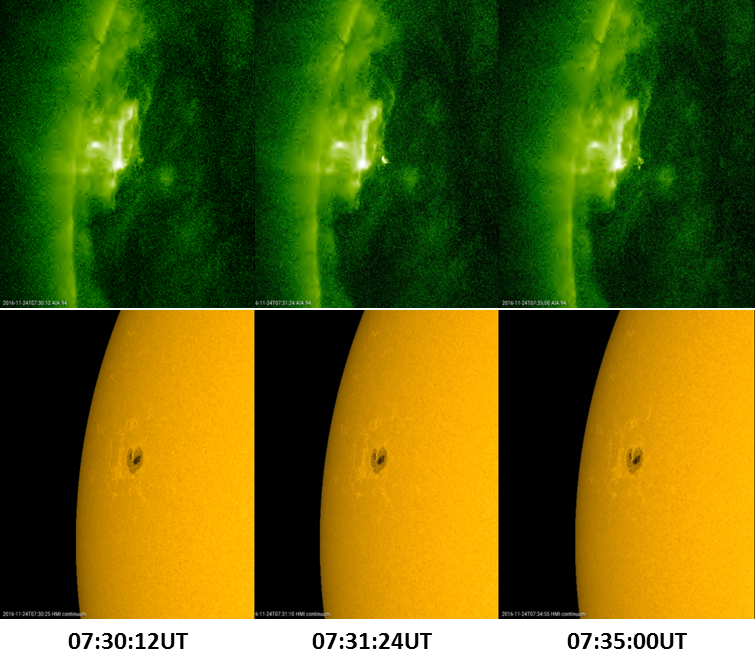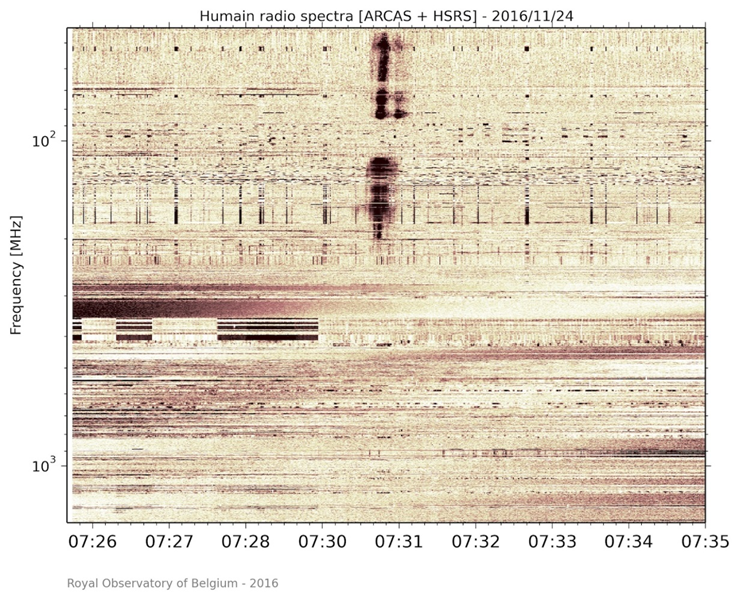On 24 November 2016 around 07:31UT, a brief brightening was observed in extreme ultraviolet imagery (EUV) from the Solar Dynamics Observatory (AIA094; top row images), indicating a small reconnection event. The related white-light images (bottom row) show that this reconnection took place near the southwest border of NOAA 2612's main sunspot. See the imagery underneath at resp. 07:30:12, 07:31:24UT, 07:35:00 (timings for AIA094).

The event left no obvious x-ray signature (no flare), however radio observations indicated that it was related to a type III radio burst. A type III radio burst is produced by a stream of electrons accelerated (usually during an eruptive event) and propagating out in the solar corona along open magnetic field lines. These electrons typically travel at a fraction of the speed of light c (about 0.3 c, or 90.000 km/s).

The picture above is a radiospectrum that combines observations from ARCAS (45 – 275 MHz in this plot) and HSRS (275 – 1495 MHz), both radio receivers at the Humain Solar Radio Observatory. The frequency scale is plotted on a logarithmic scale (vertical axis) and decreasing upward. We see soon after 07:30 UT a group of type III bursts, lasting less than a minute. The interruption of the burst around 100 MHz is due to a filter that attenuates the FM band that would otherwise interfere with the receiver.
What makes this observation special is that it’s the first clear solar radio burst observed with ARCAS, a new radio spectrometer installed at the Humain Observatory late October. ARCAS (Augmented Resolution Callisto Spectrometer) is a digital spectrometer based on a Software Defined Radio receiver configured to scan the band 45 - 450 MHz. It has been set up on 27 October 2016, in parallel to the Callisto receiver already in operation at Humain. Both instruments share the same receiving antenna via a splitter. ARCAS improves the frequency coverage of Callisto and gives access to frequency bands that were difficult to observe so far. It is also about 4 times faster than Callisto.
The folks at Humain are still in the "commissioning" phase of this instrument, and thus eagerly awaiting more solar activity to assess the new toy's performances. With the very low solar activity ongoing, it is already a miracle to have caught this small group of type III bursts. More near real-time radiospectra can be found at here.





